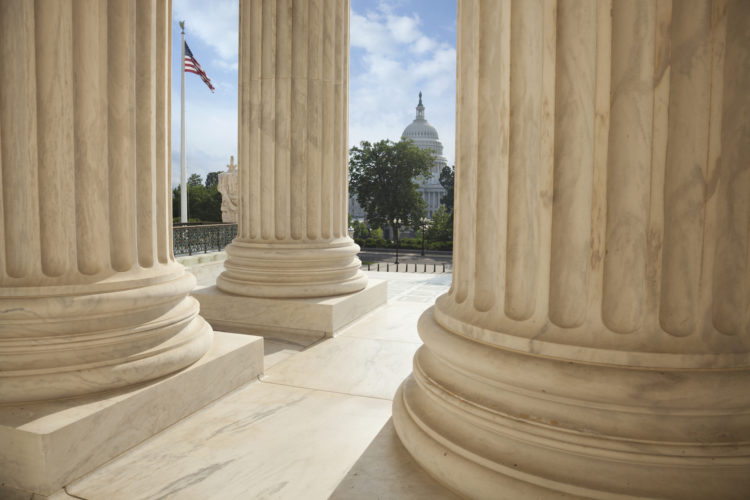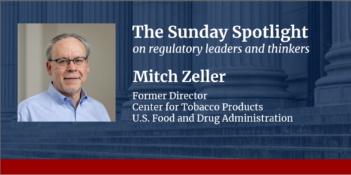
The Supreme Court preserved agency deference in Kisor v. Wilkie.
In Kisor v. Wilkie, the U.S. Supreme Court narrowly retained a controversial form of deference to agency legal interpretation known as Auer deference. Although momentum had been building for the last ten years to overturn this decades-long precedent, the Court declined the invitation and instead took the opportunity to synthesize and consolidate core administrative law doctrines in a helpful way.
Surprisingly, a case that many conservative lawyers and academics had hoped would initiate the process of administrative deconstruction became a case that will likely solidify the deferential approach that critics rail against.
The dispute in Kisor involved the denial of disability benefits to James Kisor by the U.S. Department of Veterans Affairs. But it is the larger context, not the particular facts of the case, that made this an important case for the Supreme Court.
Deference doctrines—like Auer deference and its more well-known cousin, Chevron deference—are judge-made principles that shift some of the responsibility for interpreting laws from judges to administrative agencies, such as the U.S. Environmental Protection Agency or the U.S. Food and Drug Administration. Importantly, though, these doctrines have never been a blank check to agencies.
Usually, as with Chevron deference, a judge only defers to an agency’s interpretation after determining that there is an ambiguity in the relevant legal text. To resolve that ambiguity, a judge defers to an agency’s own interpretation of the text if it is within the realm of reasonably possible interpretations.
This shared responsibility for interpreting regulatory laws has come under fire in recent years. Critics of deference doctrines claim that deference violates the U.S. Constitution and creates practical problems, although these points are highly contested and in many cases baseless. From a more cynical perspective, critics of deference doctrines—which are ideologically neutral in themselves—tend to be conservative, and they may anticipate that taking away authority from agencies would give the increasingly conservative judiciary more power to limit future Democratic administrations’ regulatory actions.
Kisor v. Wilkie centered on the simple question of whether one particular deference doctrine—Auer deference—should be overturned. But it ostensibly was the front-door entry point for a larger broadside attack on other deference doctrines.
Auer deference—also known as Seminole Rock deference—generally requires federal judges to defer to an agency’s interpretation of an ambiguous regulation previously promulgated by the agency under its rulemaking authority, so long as that interpretation is not “plainly erroneous or inconsistent with the regulation.” The focus on regulatory text promulgated by agencies, as opposed to statutory text promulgated by Congress, is the key difference between Auer and Chevron deference, respectively. But the doctrines are similar enough that many believed that the decision in Kisor, about whether to retain Auer deference, would have profound implications for the future vitality of Chevron deference.
The challenge to Auer deference in Kisor had been a long time coming. In a series of recent cases, the Court indicated it was interested in jettisoning Auer deference in an appropriate case. As Justice Clarence Thomas wrote in a dissent from a denial of review in one such candidate case, “any reader of this Court’s opinions should think that the doctrine is on its last gasp.” When the Court granted review in Kisor after the addition of deference-skeptic Justice Brett M. Kavanaugh to the Court, many assumed that Auer’s hour had come.
Instead, the Court reaffirmed Auer deference, with Chief Justice John G. Roberts, Jr. offering the pivotal vote on stare decisis grounds.
Although the justices voted 9-0 to reverse and remand the case to the lower court, the opinions in Kisor were fractured. Justice Elena Kagan wrote for four justices that Auer plays a critical role in the modern administrative state, and Justice Neil M. Gorsuch wrote for four justices who favored overturning Auer. From a practical standpoint, what matters is the portion of Justice Kagan’s opinion that Justice Roberts joined—specifically, those parts that (1) retained Auer on stare decisis grounds and (2) restated how Auer should be administered in the lower courts, correcting the “caricature” that deference under the doctrine is “reflexive.”
In the wake of the decision, some have read this latter part of Justice Kagan’s opinion as replacing Auer deference with something else. Indeed, Justice Gorsuch argued that what emerged from this part was a “maimed,” “enfeebled,” and “zombified” version of Auer deference that is not worth preserving in its own right. These claims are significantly exaggerated, if not misleading. What actually occurred was that Justice Kagan synthesized scattered caselaw around Auer deference to make it more like Chevron deference, and the Chief Justice acceded.
Going forward, judges applying Auer deference will have three basic tasks, just as they do with Chevron: determine if there is a genuine ambiguity after exhausting traditional tools of legal interpretation; determine if Auer deference applies at all, checking exceptions that the Court had previously developed; and, if Auer applies, determine whether the agency’s interpretation is reasonable.
Importantly, there does not appear to be anything genuinely new about any of this except the clarity the opinion engrafts on the doctrine. Read for all it is worth, Kisor might “express a mood” that judges should be less willing to defer, as Michael Herz has argued, but the decision is otherwise a restatement of existing law.
Here is the upshot: by synthesizing recent caselaw applying Auer to make it more like Chevron deference, the Court has further ensconced deference to agency interpretations of regulations in the administrative law canon. Although Roberts wrote separately to emphasize that cases involving Auer deference are “distinct” from cases involving Chevron deference and that the Court’s decision in Kisor should not “touch upon” Chevron’s validity, it is difficult to see how they can be entirely sequestered. Kisor may well be the turning point in the war over deference doctrines.
This essay is part of a series, entitled The Supreme Court’s 2018-2019 Regulatory Term.




